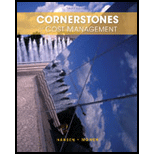
1.
Calculate the
1.
Explanation of Solution
Cash inflows: The amount of cash received by a company from the operating, investing, and financing activities of the business during a certain period is referred to as
Cash outflows: The amount of cash paid by a company for the operating, investing, and financing activities of the business during a certain period is referred to as
Net present value method (NVP): Net present value method is the method which is used to compare the initial cash outflow of investment with the present value of its cash inflows. In the net present value, the interest rate is desired by the business based on the net income from the investment, and it is also called as the discounted cash flow method.
Calculate the cash flow and net present value (NVP) for make alternative of Company J as follows:
| Year |
Cash inflow (9) (A) | Present value factor @12% (B) |
Present value |
| 2015 | $ -499,013 | 0.893 | -$ 445,619 |
| 2016 | $ -456,312 | 0.797 | -$ 363,681 |
| 2017 | $ -594,130 | 0.712 | -$ 423,021 |
| 2018 | $ -658,546 | 0.636 | -$ 418,835 |
| 2019 | $ -679,800 | 0.567 | -$ 385,447 |
| Total present value | -$ 2,036,602 | ||
| Less: Cash outflow for investment (7) | $ 956,600 | ||
| Net present value | ($ 2,993,202) | ||
Table (1)
Working note (1):
Calculate the variable cost per unit.
Working note (2):
Calculate the variable cost after tax for each year.
Year 2015:
Year 2016:
Year 2017:
Year 2018:
Year 2019:
Working note (3):
Calculate the fixed cost after tax for each year.
Working note (4):
Calculate the operating expense for each year.
| Year | Variable cost (2) (E) |
Fixed cost (3) (F) |
Total operating expense |
| 2015 | $600,000 | $27,000 | $627,000 |
| 2016 | $600,000 | $27,000 | $627,000 |
| 2017 | $624,000 | $27,000 | $651,000 |
| 2018 | $660,000 | $27,000 | $687,000 |
| 2019 | $660,000 | $27,000 | $687,000 |
Table (2)
Working note (5):
Calculate the initial investment.
Working note (6):
Calculate the depreciation expense after tax for each year.
| Depreciation Schedule | ||||
| Year |
MACRS Percentage (W) |
Depreciation |
Tax Rate (Y) |
Depreciation Tax Shield |
| 2015 | 33.33% | $319,968 | 40% | $127,987 |
| 2016 | 44.45% | $426,720 | 40% | $170,688 |
| 2017 | 14.81% | $142,176 | 40% | $56,870 |
| 2018 | 7.41% | $71,136 | 40% | $28,454 |
| Total | $960,000 | |||
Table (3)
Working note (7):
Calculate the cash outflow for new equipment.
Working note (8):
Calculate the salvage value after tax.
Working note (9):
Calculate the cash inflow of new equipment each year.
| Year |
Operating expense after tax (P)(4) | Depreciation expenses after tax (Q) (6) | Salvage value after tax (R) (8) |
Net cash inflow |
| 2015 | ($627,000) | $127,987 | ($499,013) | |
| 2016 | ($627,000) | $170,688 | ($456,312) | |
| 2017 | ($651,000) | $56,870 | ($594,130) | |
| 2018 | ($687,000) | $28,454 | ($658,546) | |
| 2019 | ($687,000) | $7,200 | ($679,800) |
Table (4)
2.
Calculate the cash flow and net present value (NVP) for buy alternative of Company J.
2.
Explanation of Solution
Calculate the cash flow and net present value (NVP) for buy alternative of Company J as follows:
| Year |
Cash inflow (10) (A) | Present value factor @12% (B) (11) |
Present value |
| 2015 | $ -810,000 | 0.893 | -$ 723,330 |
| 2016 | $ -810,000 | 0.797 | -$ 645,570 |
| 2017 | $ -842,400 | 0.712 | -$ 599,789 |
| 2018 | $ -891,000 | 0.636 | -$ 566,676 |
| 2019 | $ -891,000 | 0.567 | -$ 505,197 |
| Total present value | -$ 3,040,562 | ||
| Less: Salvage value (11) | -$ 600 | ||
| Net present value | -$ 3,039,962 | ||
Table (5)
Working note (10):
Calculate the cash inflow for each year.
Year 2015:
Year 2016:
Year 2017:
Year 2018:
Year 2019:
Working note (11):
Calculate the salvage value after tax for year 2014.
3.
Indicate whether company J should make the containers or buy the containers, and explain the quantitative factors that should be considered for the capital investment analysis.
3.
Explanation of Solution
Indicate whether company J should make the containers or buy the containers, and explain the quantitative factors that should be considered for the capital investment analysis as follows:
In this case, company J should make the containers because make decision ($2,993,203) has less cost than the buy decision ($3,039,662). Qualitative factors of capital investment analysis are,
- Reliability of supplier,
- Quality of the product,
- Stability of purchasing price,
- Labor relations, and
- Community relation.
Want to see more full solutions like this?
Chapter 19 Solutions
Cornerstones of Cost Management (Cornerstones Series)
- On May 1st, Golden Harvest, Inc. purchased $1,500 worth of supplies on account. On December 31st, the fiscal year-end for Golden Harvest, it is determined that $800 worth of supplies still remain. What is the balance in the supplies account after adjustment?arrow_forwardBeginning inventory 53000, ending inventory 60000arrow_forwardCompute the company's assets turnover for 2022.arrow_forward
 Cornerstones of Cost Management (Cornerstones Ser...AccountingISBN:9781305970663Author:Don R. Hansen, Maryanne M. MowenPublisher:Cengage Learning
Cornerstones of Cost Management (Cornerstones Ser...AccountingISBN:9781305970663Author:Don R. Hansen, Maryanne M. MowenPublisher:Cengage Learning
